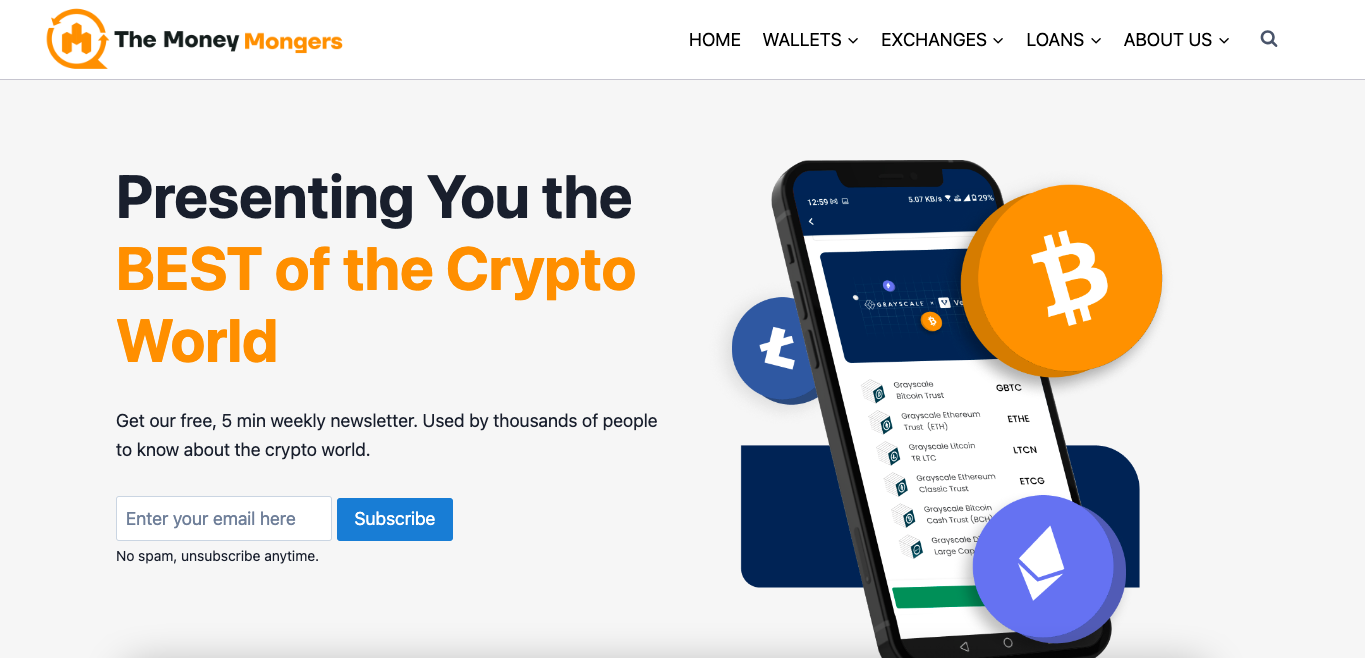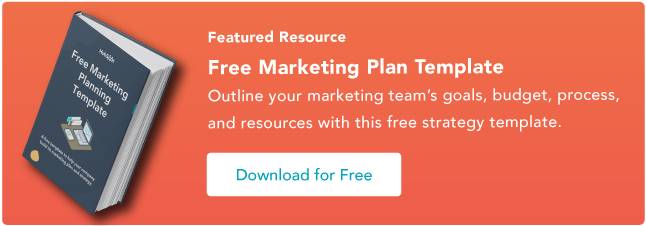Ever felt the thrill of coming into work only to notice that plenty of new leads have started signing up for a product demo through an article or asset you’ve created?

I can tell you, from personal experience, that few things give you as strong of a motivation boost as this. After all, it’s proof that you must be doing something “right.”
That said, it takes a lot of time to work out where to find your target audience. A lot of it comes down to building the right marketing funnel strategy, i.e., deciding what types of collateral to use at which stage of a lead’s readiness to buy.
Today, we’ll learn a marketing funnel and tips for designing your own.
Stages of the Marketing Funnel
Tips for Building a Marketing Funnel Strategy
Marketing Funnel – A Practical Example
What is the marketing funnel?
The marketing funnel describes all the stages your prospect has to go through before becoming your customer — from learning about your company to making the purchasing decision.
In short, the marketing funnel acts as a map to guide your prospects to conversion (and beyond).
If you closely analyze what happens at every stage of your funnel, you’ll be able to understand how to influence prospects to move them to the next stage. Eventually, they become your customers.
A well-designed marketing funnel can translate into stronger brand awareness, higher loyalty, and more sales.
Stages of the Marketing Funnel
There are various approaches to the marketing funnel — some divide it into just three stages, while others break it down much more granularly.
Based on my marketing experience, I believe the following demonstrates how leads become customers well.
1. Awareness
Potential buyers enter the marketing funnel when they first come across your brand.
Depending on the types of content and channels your company appears on, this can be anything from finding you in a Google search, watching a video on social media, or downloading a free ebook.
The first stage should be built around educating leads and building an expert image in your category.
2. Interest
This is when prospects become aware of your brand’s existence. Since you pique their interest, they start engaging with it.
They might, for instance, visit your blog, check out your profile on social media, or even sign up for your newsletter (if you’ve really made a great impression on them).
3. Consideration
It’s evaluation time! Prospects intensify their efforts to gather as much information about your brand as possible. They will look for testimonials, product reviews, and pricing and closely review your offering.
Remember that just because they’ve shortlisted you doesn’t mean you’ll be their final choice. They will most definitely compare your product or service against competitors.
4. Decision
The Decision stage is when the lead is ready to become your customer. For example, they might decide on it while participating in a free demo of your tool or — if you’re in e-commerce — by putting items in their cart.
Your role here is to help them finalize the deal as easily as possible, creating a distraction-free customer journey.
Tips for Building a Marketing Funnel Strategy
1. Power your funnel with user-generated content.
While forming an opinion on a product or brand, people seek authentic, i.e., unsponsored, opinions from real-life users.
That’s why many brands are now investing in user-generated content (UGC) on social media to take leads down the funnel.
Unlike collab posts published on influencer channels, UGC appears on the company’s social media profile. As it turns out, this type of marketing collateral is also extremely popular.
HubSpot’s study on social media trends found that 22% of Instagram users watch branded “Stories” from businesses more than once a week. Moreover, 36% also admit liking, commenting, or sharing them.
One company that has found great success with UGC is Travel-Lingual. Its founder, James Smith, says they’ve started using a branded hashtag and asked their community to post their travel photos, stories, and experiences via social media.
“Not only did this build community, but it also created a ton of genuine content,” he says.
And here’s the best part — this user-generated content became their funnel’s foundation.
“We strategically re-created these stories across all our channels, from blogs to social media. Potential travelers could connect with these real experiences, building a stronger bond with our brand,” Smith says.
This let Trave-Lingual see a 30% increase in engagement rates and 20% more conversions from leads to bookings.
2. Blend engaging blog content with email follow-ups.
A lot is happening in the content world, with AI entering the game at full speed and Google continuously introducing new algorithms (think HCU, core, and spam updates) to improve the content.
Brands are competing for people’s attention, and even though the bar is set high, they still see producing good quality content as an effective marketing funnel strategy. Back it up with smart email follow-ups, and you get a recipe for success.
That’s precisely what Money Mongers do.
“We started by crafting blog posts that hit right at the heart of our audience’s curiosity. These weren’t just any posts; they were packed with insights and aimed to make our readers feel like they were learning something valuable,” Founder Sudhir Khatwani says.

Khatwani recalls that his team played detective with their analytics. They spotted which posts were the hot favorites and used this intel to send out emails that weren’t just spammy sales pitches.
“These emails were more like a friendly nudge, offering deeper dives into topics our readers already showed interest in. Think free ebooks, webinars — the good stuff,” he says.
What was the result?
Their email list and sales grew by 40% and 25% in three months, respectively.
Sudhir adds that it was all about making their audience feel heard and giving them content that was enriching but didn’t push hard for sale.
3. Use personalized email campaigns.
Although there are plenty of communication channels brands can use to reach their prospects and customers, email is still among the most popular. And if you add personalization to it, it can also be deemed the most effective.
According to HubSpot’s 2022 marketing survey, email has the third highest ROI of any channel. Automation can help you send the right emails at the right time for each lead.
This isn’t news to the cofounder of Gate2AI, Nathan Clark, who regularly uses personalized emails as part of their marketing funnel.
“The key was to tailor email content at every stage of the funnel based on user interactions and preferences,” he says.
The brand used different content at various stages of the customer journey.
At the awareness stage, they use informative and engaging content to capture the audience’s attention. In the consideration stage, they sent targeted emails with case studies and success stories showcasing the practical applications of our AI tools.
“Finally, at the decision stage, we introduced limited-time offers and exclusive benefits to encourage conversions,” says Clark.
Thanks to personalizing their communication, Gate2AI has boosted its conversion rate by 20% and increased customer retention by 15%.
4. Create top-of-the-funnel collateral around FAQs.
One of the ways to catch a lead’s interest in the Awareness stage is to create content relevant to their situation, for example, articles based on frequently asked questions.
Justin Chia, founder of Justjooz, ideates blog post ideas by analyzing people’s common questions on tech, the industry Justin operates. He then creates content answering those questions in a way anyone, not only tech-savvy readers, can grasp.
“Over three months after starting this blogging strategy, website visits increased by 40%,” Chia says. “More readers now check out our other pages, too. It seems the posts lead people to our site in a natural way.”
For Justjooz, educating people, building trust, and taking them down the marketing funnel naturally is better than running paid ads.
Content that circles user questions and problems can also be used further down the funnel, as I discuss next.
5. Adjust marketing touchpoints to your customer journey.
What’s the secret to an effective marketing funnel? There isn’t a single answer. However, according to Yeespy CEO Peter Michaels, it comes down to two key elements:
- Aligning touchpoints to guide prospects as they explore your product or service.
- Making sure that your funnel reflects your customers’ journeys.
“In our SaaS journey, one standout strategy centered around a webinar series targeting mid-funnel prospects seeking in-depth insights into our industry,” Michaels says.
The company ideated webinar topics based on their customers’ pain points. The goal of this MoFU collateral was to position the product naturally as a solution.
They leveraged ads and email campaigns to attract a niche audience, i.e., one looking for a solution like theirs.
“The webinars, hosted by industry experts, provided high-value content, establishing credibility and trust among attendees,” Michaels says. “And the results were remarkable — we witnessed a 40% increase in webinar registrations compared to previous campaigns.”
Moreover, Michaels notes that over 30% of attendees progressed to demo requests or trial sign-ups, resulting in a 25% increase in conversions within the mid-funnel stage.
This marketing funnel tactic works since it provides leads with substantial value while subtly guiding them toward the next stage.
6. Create comparison page funnels.
The more competitive the industry you operate in, the harder it might be for leads to tell what makes your solution better than others on the market. Here’s where creating comparison pages can be very effective.
Josh Gallant, founder of Backstage SEO, has helped several startups boost traffic and visitor-to-lead conversions by creating these product landing pages.
“For one client, we launched ~40 comparison pages that drove 2-3K organic visits per month, with an average visitor-to-lead conversion rate of around 10%. That’s ~200 inbound leads every month from a relatively small number of visits purely because of how high the purchase intent was of the visitors,” he says.
To take comparison page visitors further down the funnel, you can add an actionable CTA like “demo request,” which hands them over to sales.
“Bonus points if you create custom responses tailored to the competitor page where the conversion took place,” Gallant adds.
This experience has made it one of the most popular content formats Backstage SEO recommends to clients.
7. Create a seamless experience for your prospects and leads.
A good marketing funnel strategy goes beyond creating personalized content and selecting the proper communication channels. It’s also about how the information is presented to the viewer.
Christy Pyrz, the Chief Marketing Officer of Paradigm Peptides says their team has made ease of access a central part of our marketing funnel strategy.
“A common mistake that businesses make is to either create too many lead-ins to reach the desired information or present it in a manner that is either confusing or overwhelming, which leads to frustration and eventual abandonment,” Pyrz says.
Pyrz says the team recognizes the need to access information quickly and seamlessly. As a result, they limit on-page promotions, avoid an overabundance of field forms, and eliminate irrelevant or frivolous information.
Marketing Funnel – A Practical Example
Let’s now put theory into practice. In this scenario, I will design a marketing funnel strategy for a customer feedback tool.
The target users of this software are Customer Success teams who need to analyze their clients’ satisfaction and loyalty levels. This will help them keep the churn rate under control.
To do this, they are looking for a feedback collection tool that will let them:
- Spot low customer sentiment levels.
- Take proactive and reactive measures to retain unhappy clients.
Awareness
The lead is looking to find ways to keep their customer retention rate high. They start looking for information online — search via Google, look for videos on YouTube, or read Reddit threads.
Let’s say that they’ve popped the “how to improve customer retention” query into search. Brands can use it on their website and blog copy as a long-tail keyword to increase traffic.

Your website happens to be among the top three results for the phrase. They click on the link and start learning about the ins and outs of high client retention rates. Your content covers common causes and potential ways to fix customer dropoff.
While reading the piece, they also learn about surveys as one of the methods to check customer sentiment. You introduce them to concepts like Customer Satisfaction (CSAT) and Net Promoter Score (NPS) surveys.
Examples of marketing collateral in the Awareness stage:
- SEO-optimized educational articles, for example, “How to keep customer churn under control” or “Best practices for a high survey response rate.”
- Free ebooks on topics related to customer satisfaction.
- Social media content with tips and unique insights.
Consideration
The prospect is now aware that they’ll need a platform to measure customer satisfaction and loyalty to reach their goals. So, they start researching tools.
They now begin looking up terms like “best tools to gather feedback” in Google. They read reviews on third-party sites, check out testimonials on customer feedback tool websites, etc.
Examples of marketing collateral in the Consideration stage:
- Case studies.
- Reviews on G2Crowd, Serchen, Capterra.
- Answers to tool-related questions on Quora/Reddit.
- Testimonials.
- Social media posts focused on specific tools.
- Landing pages — tool comparison pages that help your tool stand out.
Decision
It’s decision time; the prospect starts shortlisting their options and testing the tools — focusing on those that offer a free trial. They take a deeper dive into the features and pricing.
Remember that leads who sign up for a freemium/free plan are not your clients yet. They’re still in the decision stage.
Technically, they already have an account in the tool and can even run a simple NPS or CSAT survey, but they aren’t a paying customer yet and can opt-out easily.
Examples of marketing collateral in the Decision stage:
- User onboarding sequences. It’s super important to make them engaged to avoid dropout.
- How-to videos.
- Knowledge base articles.
- Pricing landing page — one that explains what each plan offers.
- Case studies.
Getting Your Marketing Funnel Strategy Right
You can use plenty of tactics to build an effective marketing funnel strategy. Before creating the collateral for each stage, ensure it fits the context of your lead’s journey.
Are they ready to learn about tools? You cannot, for instance, expect a prospect to read your case study if they don’t know if your solution resolves their problems.
As with many other areas in business, creating the “right” marketing funnel is a trial and error endeavor — but it’s worth the effort. Good luck!
- SEO Powered Content & PR Distribution. Get Amplified Today.
- PlatoData.Network Vertical Generative Ai. Empower Yourself. Access Here.
- PlatoAiStream. Web3 Intelligence. Knowledge Amplified. Access Here.
- PlatoESG. Carbon, CleanTech, Energy, Environment, Solar, Waste Management. Access Here.
- PlatoHealth. Biotech and Clinical Trials Intelligence. Access Here.
- Source: https://blog.hubspot.com/marketing/i-took-a-deep-dive-into-the-marketing-funnel-heres-what-i-learned


![Download Now: Free Marketing Plan Template [Get Your Copy]](https://zephyrnet.com/wp-content/uploads/2024/01/i-took-a-deep-dive-into-the-marketing-funnel-heres-what-i-learned.png)


